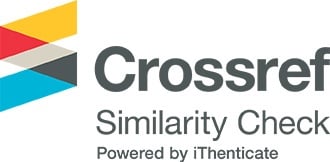DẤU ẤN GEN CỦA LICHEN PHẲNG MIỆNG QUA PHÂN TÍCH DỮ LIỆU PHIÊN MÃ
Các tác giả
DOI: https://doi.org/10.59294/HIUJS.KHTT.2024.032Từ khóa:
lichen phẳng miệng, dữ liệu phiên mã, khiếm khuyết hàng rào biểu mô, nhiễm trùngTóm tắt
Lichen phẳng miệng (LPM) là một trong những bệnh lý niêm mạc miệng phổ biến nhất, nhưng vẫn chưa có cách chữa. Nghiên cứu này nhằm hiểu rõ hơn về dấu ấn gen trong sinh bệnh học LPM thông qua phân tích các bộ dữ liệu phiên mã có sẵn trong cơ sở dữ liệu công cộng. Hai tập dữ liệu phiên mã được tải xuống và phân tích theo hai hướng: toàn bộ hoặc một phần dữ liệu sau khi loại bỏ các ngoại lai. Các gen biểu hiện khác biệt (DEG) tăng điều hoà trong bộ dữ liệu biểu mô LPM so với người khỏe mạnh về phát triển biểu bì, biệt hóa tế bào sừng, sừng hóa, phản ứng với nhiễm khuẩn và phản ứng miễn dịch bẩm sinh. Ngược lại, DEG tăng điều hoà trong bộ dữ liệu của toàn bộ lớp niêm mạc LPM chủ yếu phản ánh hoá ứng động của tế bào miễn dịch và phản ứng viêm/miễn dịch. 43 DEG trùng lặp trong hai tập dữ liệu được xác định sau khi loại bỏ các ngoại lai khỏi mỗi tập dữ liệu. Các DEG chung liên quan đến tăng sừng, lành thương, khiếm khuyết hàng rào biểu mô và phản ứng với nhiễm khuẩn. Tóm lại, chúng tôi xác định được các dấu ấn gen liên quan đến sự tăng sừng, lành thương, khiếm khuyết hàng rào biểu mô và phản ứng với nhiễm trùng trong LPM.
Abstract
Oral lichen planus (OLP) is one of the most common oral mucosal diseases, but there is still no cure. This study aimed to investigate the gene signatures of OLP through analysis of transcriptomic datasets available in public databases. Two transcriptomic datasets were downloaded and analyzed in two ways: the entire set or subset of data after removing outliers. Differentially expressed genes (DEGs) upregulated in OLP epithelial dataset compared to healthy individuals involved in keratinocyte differentiation, keratinization, epidermal development, response to infection, and innate immune response. In contrast, the upregulated DEGs in the dataset of the OLP mucosa mainly reflected immune cell chemotaxis and inflammatory/immune responses. 43 overlapping DEGs in the two datasets were identified after removing outliers from each dataset. Common DEGs were involved in hyperkeratosis, wound healing, barrier defects, and response to infection. In summary, we identified gene signatures associated with hyperkeratosis, wound healing, epithelial barrier defects, and response to infection in OLP.
Tài liệu tham khảo
[1] M.R. Roopashree, R.V. Gondhalekar, M.C. Shashikanth, … and A. Shukla, “Pathogenesis of oral lichen planus–a review”, Journal of Oral Pathology and Medicine, Vol. 39, pp.729–734, 2010. DOI: https://doi.org/10.1111/j. 1600-0714.2010.00946.x
DOI: https://doi.org/10.1111/j.1600-0714.2010.00946.x[2] Y. Liu, G. Liu, Q. Liu, … and X. Wang, “The cellular character of liquefaction degeneration in oral lichen planus and the role of interferon gamma”, Journal of Oral Pathology and Medicine, Vol. 46, pp.1015–1022, 2017. DOI: https://doi. org/10.1111/jop.12595
DOI: https://doi.org/10.1111/jop.12595[3] K. Baek and Y. Choi, “The microbiology of oral lichen planus: Is microbial infection the cause of oral lichen planus?”, Molecular Oral Microbiology, Vol. 33, pp.22–28, 2018. DOI: https://doi.org/10.1111/omi.12197
DOI: https://doi.org/10.1111/omi.12197[4] K. Danielsson, M. Ebrahimi, E. Nylander, Y.B. Wahlin and K. Nylander, “Alterations in Factors Involved in Differentiation and Barrier Function in the Epithelium in Oral and Genital Lichen Planus”, Acta Dermato-Venereologica, Vol. 97, pp.214–218, 2017. DOI: https://doi.org/10.2340/00015555-2533
DOI: https://doi.org/10.2340/00015555-2533[5] R. Lu, J. Zhang, W. Sun, G. Du and G. Zhou, “Inflammation-related cytokines in oral lichen planus: an overview”, Journal of Oral Pathology and Medicine, Vol. 44, pp.1–14, 2015. DOI: https://doi.org/10.1111/jop.12142
[6] X.A. Tao, C.Y. Li, J. Xia, … B. Cheng, “Differential gene expression profiles of whole lesions from patients with oral lichen planus”, Journal of Oral Pathology and Medicine, Vol. 38, pp.427–433, 2009. DOI: https://doi.org/10. 1111/j.1600-0714.2009.00764.x
DOI: https://doi.org/10.1111/j.1600-0714.2009.00764.x[7] V. Gassling, J. Hampe, Y. Acil, … and R. Hasler, “Disease-associated miRNA-mRNA networks in oral lichen planus”, PLoS One, Vol. 8, pp.e63015, 2013. DOI: https://doi.org/10.1371/journal.pone.0063015
DOI: https://doi.org/10.1371/journal.pone.0063015[8] K. Danielsson, P.J. Coates, M. Ebrahimi, … and K. Nylander, “Genes involved in epithelial differentiation and development are differentially expressed in oral and genital lichen planus epithelium compared to normal epithelium”, Acta Dermato-Venereologica.; Vol. 94, pp.526–530, 2014. DOI: https://doi.org/10.2340/ 00015555-1803
DOI: https://doi.org/10.2340/00015555-1803[9] Q. Yang, B. Guo, H. Sun, … and X. Wang, “Identification of the key genes implicated in the transformation of OLP to OSCC using RNA-sequencing”, Oncology Reports, Vol. 37, pp.2355–2365, 2017. DOI: https://doi. org/10.3892/or.2017.5487
DOI: https://doi.org/10.3892/or.2017.5487[10] E.F. Zhong, A. Chang, A. Stucky, … and P.P. Sedghizadeh, “Genomic Analysis of Oral Lichen Planus and Related Oral Microbiome Pathogens”, Pathogens, Vol. 9, pp/952, 2020. DOI: https://doi.org/10.3390/ pathogens9110952
DOI: https://doi.org/10.3390/pathogens9110952[11] R. Iglesias-Bartolome, A. Uchiyama, A.A. Molinolo, … and M.I. Morasso, “Transcriptional signature primes human oral mucosa for rapid wound healing”, Science Translational Medicine, Vol. 10, pp.eaap8798, 2018. DOI: https://doi.org/10.1126/scitranslmed.aap8798
DOI: https://doi.org/10.1126/scitranslmed.aap8798[12] S. Li, A. Teegarden, E.M. Bauer, … and A.K. Indra, “Transcription Factor CTIP1/ BCL11A Regulates Epidermal Differentiation and Lipid Metabolism During Skin Development”, Scientific Reports, Vol. 7, pp.13427, 2017. DOI: https://doi.org/10.1038/s41598-017-13347-7
DOI: https://doi.org/10.1038/s41598-017-13347-7[13] Q. Shu, N.J. Lennemann, S.N. Sarkar, Y. Sadovsky and C.B. Coyne, “ADAP2 Is an Interferon Stimulated Gene That Restricts RNA Virus Entry”, PLoS Pathogen, Vol. 11, pp.e1005150, 2015. DOI: https://doi.org/10.1371/journal. ppat.1005150
DOI: https://doi.org/10.1371/journal.ppat.1005150Tải xuống
Tải xuống: 52











